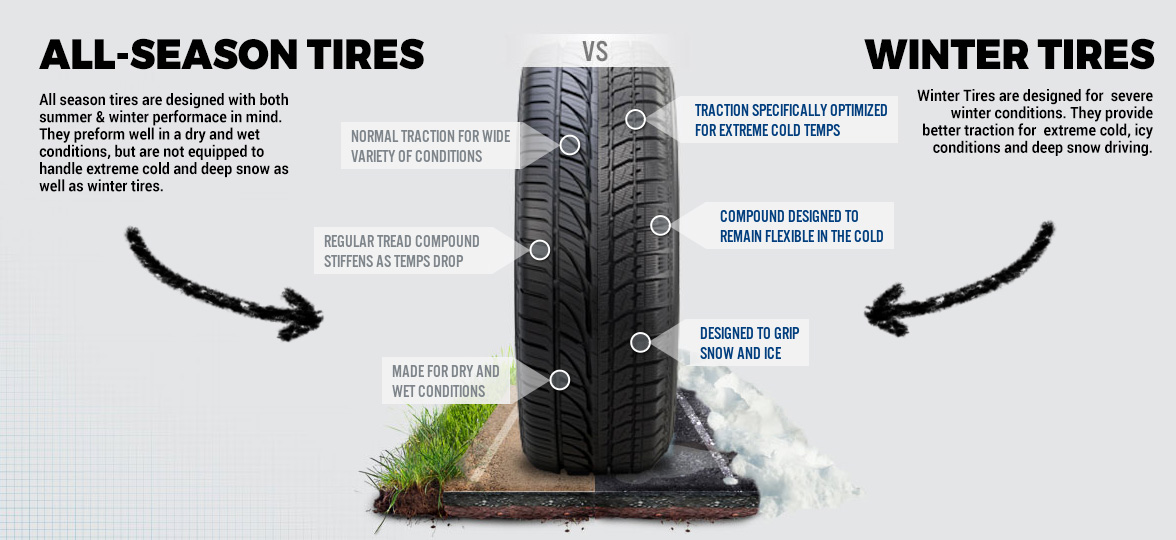Tires carry a wealth of information on their sidewalls; unfortunately, it's all in code. Most of it is of no concern to many owners, but it can be valuable for those who want to know the seasons for which their tires are intended, those who plan to replace their tires, or new-car buyers who are given a choice of sizes and types.
Apart from the name of the manufacturer and the tire model -- such as Bridgestone Turanza EL 400 -- the following marking, from a Honda Civic, is likely the most prominent.
P simply means this is a passenger-car tire. Other codes include T (temporary, as in a spare tire), LT (light truck) and C (commercial). Not all tires include this letter.
205 (the first number) is the tire's width in millimeters.
55 (the number following the slash) is a measure of the tire's profile -- the height of its sidewall relative to its width -- expressed as the sidewall's aspect ratio in a percentage. In this example, the sidewall height is 55 percent of the tire's width, which is 205 mm. The number is known as the tire's series; a sporty tire with shorter sidewalls would be considered a lower-series tire. Off-road tires tend to be higher-series, designed to absorb the impact from rough surfaces.
R means it is a radial tire, which describes the way the underlying layers, or plies, are laid out. The radial design is now so pervasive that the R designation is superfluous -- though it conveniently separates the series and diameter numbers. On some performance tires, an additional letter precedes the R: A ZR designation means the tire's maximum speed rating is above 149 mph (see the key below). This is another unnecessary character; all tires provide a letter designation in the service description, explained below. It follows the size code, sometimes in smaller type.
Speed Ratings Letter / Max. MP
N/87
P/93
Q/99
R/106
S/112
T/118
U/124
H/130
V/149
W/168
Y/186
Z*150
*Z is an open-ended rating that means the tire's maximum speed is, at minimum, 150 mph.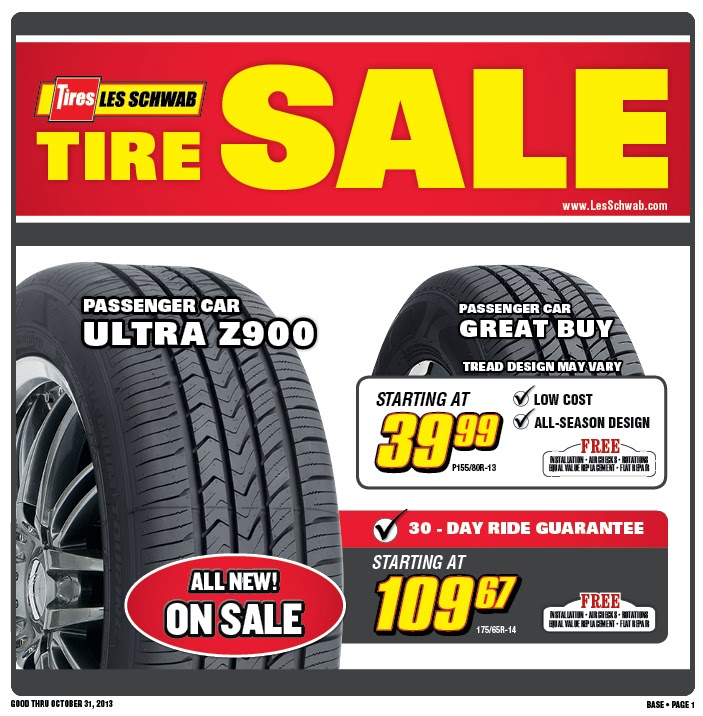
16 (the last number) is the diameter, in inches, of the rim on which the tire fits.
89H is the service description. Separated from the main code, it represents the tire's load and speed ratings. This tire's 89 load index represents 1,279 pounds (per tire), and the speed rating of H represents 130 mph. The speed rating is less important in the U.S., where the speed limits are below even the lowest listed rating (N, or 87 mph). In other countries -- and our own, when no one's looking -- people are known to drive 100 mph and above.
M+S stands for mud and snow, indicating that this is an all-season tire. It's not the clearest of the specs, because there aren't other designations for summer and winter tires: Summer tires simply lack the M+S, and winter tires are labeled M+S and add an icon of a mountain plastered with a giant snowflake. (S, AS and W would be better, but what can you do?) Uniform Tire Quality Grade The following three codes, which appear on the sidewall, typically closer to the tire's tread, are part of the National Highway Traffic Safety Administration's uniform tire-quality grading system. Unfortunately, it's not all that uniform: It appears on all-season and summer tires, but not on snow tires, light-truck tires or spares. Further, the rating comes from the manufacturers, whose results might be consistent from one of their products to the next, but whose universality is questionable.
Unfortunately, it's not all that uniform: It appears on all-season and summer tires, but not on snow tires, light-truck tires or spares. Further, the rating comes from the manufacturers, whose results might be consistent from one of their products to the next, but whose universality is questionable.
TREADWEAR 300 TRACTION A TEMPERATURE A
Treadwear: Uses numbers from 100 to about 700. Theoretically, a tire rated 150 would have a 50 percent longer lifespan than a tire rated 100 if used in the same conditions -- driver, vehicle and roads. Soft summer tires tend to have lower treadwear ratings than all-season tires. Winter tires aren't rated, but their soft compounds make for quick wear when driven off snow and ice.
The uniform tire quality grade is located on the sidewall near the tread. Traction: Uses AA, A, B and C, with AA being the best traction on a wet road. The traction measured is straight-line acceleration and braking. This is not a measure of cornering grip or performance on dry surfaces.
Temperature: Uses letter grades A, B and C, with A representing the best resistance to heat buildup and C the least. The friction of a tire on pavement generates heat, and too much heat degrades high-speed performance and can accelerate aging and failure. C is the lowest permissible rating. Temperature ratings correlate to speed, with C representing 85-100 mph, B representing 100-115 mph, and A covering speeds above 115 mph.
Notes: Arguably, the temperature rating -- like the "Z" speed rating -- is redundant, because it's tied to a speed rating that's presented with greater specificity in the service description. However, it's wise not to buy replacement tires with a rating lower than the originals', and it's a lot easier to match one of three temp ratings than it would be the 11 different speed ratings in the service description.
It's impossible to translate treadwear ratings to miles because where and how people drive plays a critical role. That said, if you think your tires wear out too quickly, consider a higher rating. The same goes for traction, but understand that changes in one characteristic typically change others, be it treadwear, noise, ride quality or price.
The same goes for traction, but understand that changes in one characteristic typically change others, be it treadwear, noise, ride quality or price.
Tire Age/Date of Manufacture
Unlike the other, more-prominent specs, the Department of Transportation's Tire Identification Number is of interest to tire owners and buyers alike -- mainly because it includes the week and year of the tire's manufacture, and thus its age. Tire age, not just wear, has become a safety concern.
Found close to the rim, the TIN consists of a series of 10-12 letters and numbers that -- like a vehicle identification number -- are of little use to a consumer. But the last four numbers represent the birth week and year of any tire built since 2000.
DOT h35R YC24 4305
The tire above was manufactured in the 43rd week of 2005. Tires built before 2000 used a three-digit code, where the year was reduced to a single digit. If the tire above were from 1997 rather than 2005, its code would be 437. Would 437 also be the code for a tire made in the 43rd week of 1987? Unfortunately, yes, it would -- and that's why four digits are now used.
Recently, the effect of tire age on safety has become a concern. Unfortunately, climates and how well a tire is cared for affect its aging, so there are no universal rules. Most tires wear out before age becomes an issue, but some automakers -- mainly German ones -- recommend replacement after six years in service, regardless of wear. Most automakers agree that 10 years is the maximum safe lifespan for any tire, including a spare that has never been used. When buying new tires, it's wise to check their birth date. Treat them like milk: Your family might finish a gallon before its expiration date, but then again, it might not. Why take the chance? For the same money, you should get the freshest milk -- or tires -- you can find. You might wear the tires out long before they're due for retirement, but why buy a set whose clock is already ticking?
What's Not on the Sidewall: The Proper Inflation Pressure
If you look closely enough, you'll probably find a maximum-pressure figure on a tire's sidewall. Don't do it. This is not the recommended pressure for you to use; it's the maximum rating for the tire, irrespective of the vehicle on which it's used. Invariably, it's dramatically higher than the pressure you should be using.
Don't do it. This is not the recommended pressure for you to use; it's the maximum rating for the tire, irrespective of the vehicle on which it's used. Invariably, it's dramatically higher than the pressure you should be using.
New cars present the proper inflation pressures on the driver's doorjamb, as required by law. For more information, see Tire Maintenance.
(C) 2013, Cars.com; distributed by Tribune Media Services
An all-season tire offers a balance of capabilities, providing acceptable performance in wet and dry conditions, as well as traction in snow.
Built for the average driver, all-season tires have moderate tread depths and rubber compounds that are engineered to provide longer tread life than summer tires, which have shallower tread depths. All-season tires are offered in many types/models, sizes, load capacities, and speed ratings for use on a wide variety of vehicles from economy cars to sedans to minivans to pickup trucks.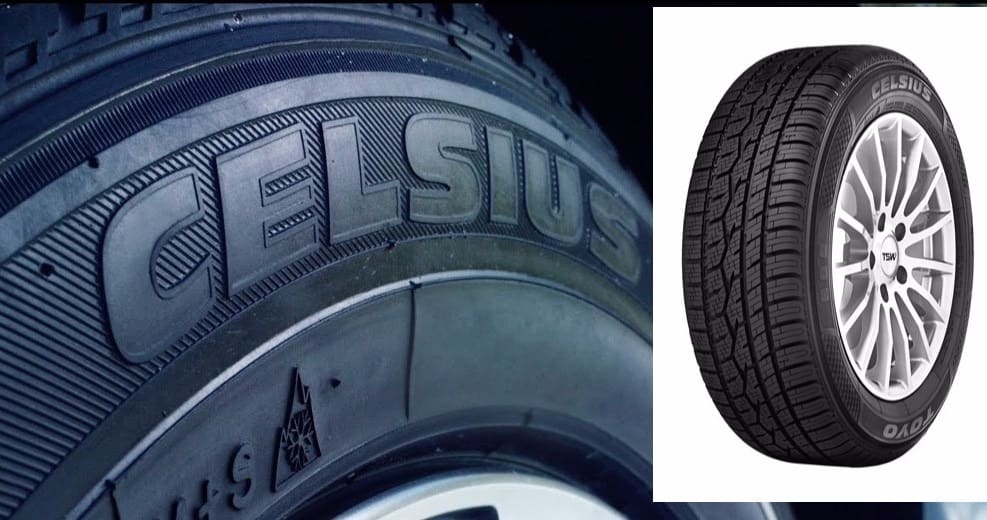 They tend to provide ride comfort, handling, and other performance attributes suitable for most drivers.
They tend to provide ride comfort, handling, and other performance attributes suitable for most drivers.
All-season tires perform well in warm weather, but they may offer less grip than summer tires, sacrificing some steering, braking, and cornering capabilities. This trade off is necessary for all-season tires to be able to provide acceptable performance in light winter conditions and provide longer tread life.
All-season tires are capable of providing traction in winter, but are not the best tire to use in extreme winter driving conditions. Drivers who encounter extreme winter weather may want to consider switching to snow tires in the winter.
Because all-season tires offer a blend of summer and winter performance, they are often a good option for drivers in moderate climates and driving conditions.
Summer tires are ideal for high-performance vehicles, and are built for speed and agility. They offer increased responsiveness, cornering, and braking capabilities. This is typically attributed to specialized tread patterns and rubber compounds that allow for improved precision on the road. The tread patterns of summer tires have less grooving and put more rubber in contact with the road. They are designed to provide maximum road-holding grip. The tread compounds of summer tires are designed to remain more flexible, allowing for better traction and grip. Summer tires may have shallower tread depths that allow for more stability when pushed closer to their limits.
They offer increased responsiveness, cornering, and braking capabilities. This is typically attributed to specialized tread patterns and rubber compounds that allow for improved precision on the road. The tread patterns of summer tires have less grooving and put more rubber in contact with the road. They are designed to provide maximum road-holding grip. The tread compounds of summer tires are designed to remain more flexible, allowing for better traction and grip. Summer tires may have shallower tread depths that allow for more stability when pushed closer to their limits.
Dimensional characteristics (such as the tire’s width, aspect ratio, and rim diameter), speed capability, and other design features make summer tires more suitable and capable for increased performance in wet and dry conditions on high-performance, sports-oriented vehicles. Surprising to some, summer tires such as our Potenza S-04 Pole Position provide better performance in wet driving conditions, thanks to unique tread patterns that help evacuate water and resist hydroplaning.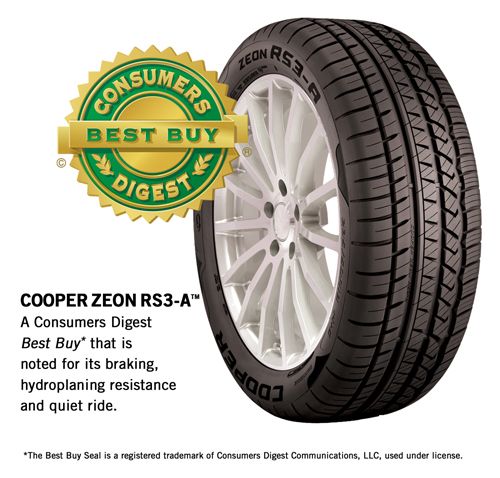
When it comes to winter driving, all-season tires may be more suitable than summer tires, given their blend of summer and winter performance capabilities, but we recommend considering making the switch to winter tires to get optimal traction and performance in extreme winter conditions.
Choosing the right tire isn’t as simple as mounting a set and never looking back. When contemplating between a summer and all-season tire, consider your driving conditions, the climate you live in, and performance needs.
It is best that all tires on your vehicle are the same type of tire – such as winter tires, all-season tires, summer tires, etc. Your vehicle’s tires should meet the manufacturer’s recommended size, speed rating, load capacity, as well as any other recommended specifications.
Ready to find the right tire for you? Check out the Tire Catalog.
Advanced search
Every autumn, car owners have to drive through slush, and later through snow and ice. As always in our country, winter comes unexpectedly, despite all the attempts of weather forecasters to predict its onset. It is possible that it will snow tomorrow, and in a week the roads will become icy - such is our country with its unstable climate. That is why it is better to take care of comfort and safety in advance and choose all-season or winter tires. This is where the question arises - which is better? So, let's figure out which is which. nine0004
All season tires are a cross between winter and summer tires.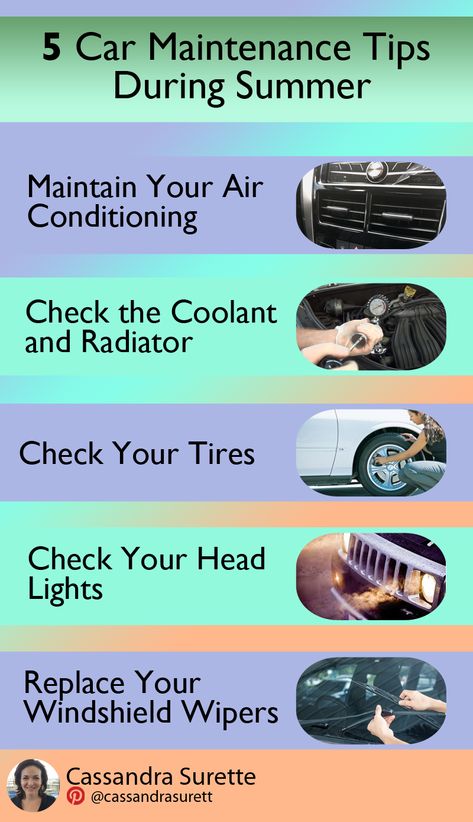 They are ideal for countries with mild climates in both summer and winter. For Russia, they are not so well suited, but lately the winters are getting warmer and all-season tires are more and more in demand. You can distinguish all-season tires from the rest by the following features:
They are ideal for countries with mild climates in both summer and winter. For Russia, they are not so well suited, but lately the winters are getting warmer and all-season tires are more and more in demand. You can distinguish all-season tires from the rest by the following features:
Winter tires, on the other hand, are ideal for severe frosts, deep snow and icy road surfaces. The pattern of their treads is strongly pronounced, which allows you to literally dig the snow under you. Winter tires come with or without studs. Studded tires bite into the ice and allow you to move more confidently and safely in winter. In addition, winter tires are made from a special composition, which allows them to warm up while driving and become very soft and elastic. Thanks to this unique quality, the flotation of winter tires is so high. The price of winter tires is slightly higher than all-season tires, but they are safer and more reliable in winter. The distinguishing features of winter tires are as follows:
In addition, winter tires are made from a special composition, which allows them to warm up while driving and become very soft and elastic. Thanks to this unique quality, the flotation of winter tires is so high. The price of winter tires is slightly higher than all-season tires, but they are safer and more reliable in winter. The distinguishing features of winter tires are as follows:
Here we come to the main question. What to choose, which tires are better - those that are cheaper or those that are more reliable? In fact, both tires have their undeniable advantages and disadvantages. Everyone must decide for himself what is more important for him - cost or quality. In addition, remember that you don’t ride winter tires in summer (their quality will suffer greatly from this), but all-weather tires are great for this.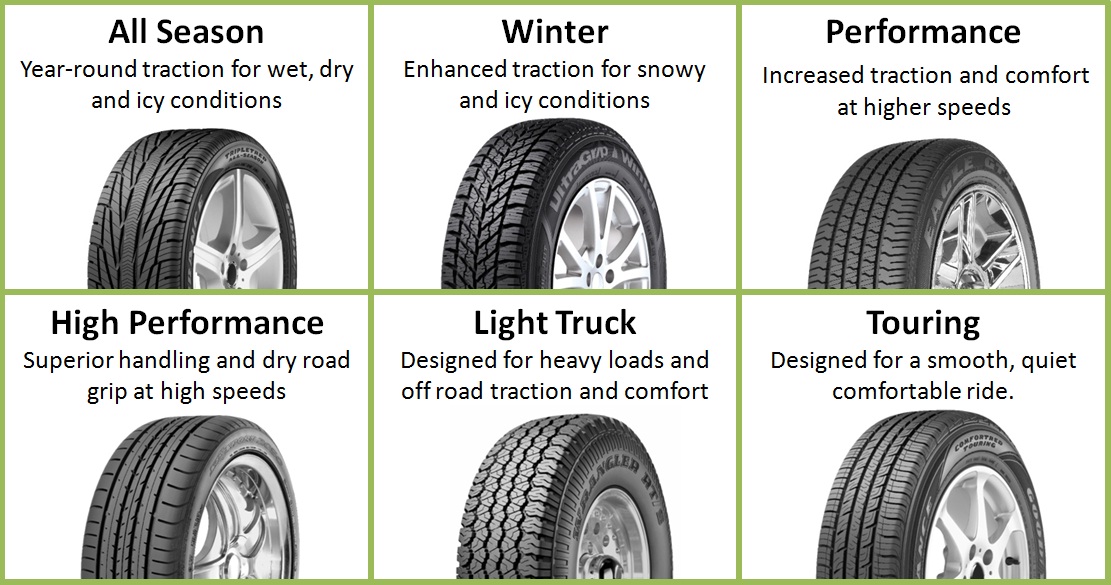 nine0004
nine0004
Also, winter tires are distinguished by the so-called noisiness, while all-season tires are quieter and do not cut the ear. All-season tires won't work for you if you own a sports car and want to drive it in the winter - these tires are not only not suited for fast speeds, but they are not as good in the cold season, but rather even bad. Therefore, the choice is yours, think and weigh all the pros and cons before deciding which tires to buy.
Rubber provides grip and transfers engine power to the asphalt. It is important to choose the right kit for your car so that the operation of the car is as efficient as possible. Each set has such a parameter as tire seasonality. Next, information will be provided on all-season tires, the features of their marking and the properties of this rubber.
In order to identify all-season tires by marking, such tires have an additional designation in the form of the letters M + S. The abbreviation Mud+Snow means that the kit provides reliable traction in difficult weather conditions. In addition, all-season tires are indicated by the symbols 4S, AS or AW (4 Season, All Season or All Weather). nine0004
The abbreviation Mud+Snow means that the kit provides reliable traction in difficult weather conditions. In addition, all-season tires are indicated by the symbols 4S, AS or AW (4 Season, All Season or All Weather). nine0004
However, it should be understood that, in fact, all-season tires lose to winter tires at low temperatures and lag behind summer tires at serious air temperatures. In fact, these tires are considered rather off-season.
Contents:
Various sets of seasonal tires are offered for the car, which differ in their characteristics and composition. Tires for the winter are made of soft grades of rubber, which will allow the tire not to tan. In addition, such products have a developed tread pattern and a high profile, which allows you to cling to snow porridge and effectively drain water. nine0004
Tires for the winter are made of soft grades of rubber, which will allow the tire not to tan. In addition, such products have a developed tread pattern and a high profile, which allows you to cling to snow porridge and effectively drain water. nine0004
The difference between summer tires in hard rubber. This tire perfectly tolerates high loads and does not melt while driving, confidently clinging to the surface. The profile height is small, and the contact patch with the road is the most extensive. However, in low-temperature conditions, it hardens and does not provide proper grip, which results in a long braking distance.
Each set has a concept of tire seasonality. Despite the fact that tires of a certain composition are labeled as all-season tires, such a set is demi-season tires. These all-season tires have a softer rubber compound.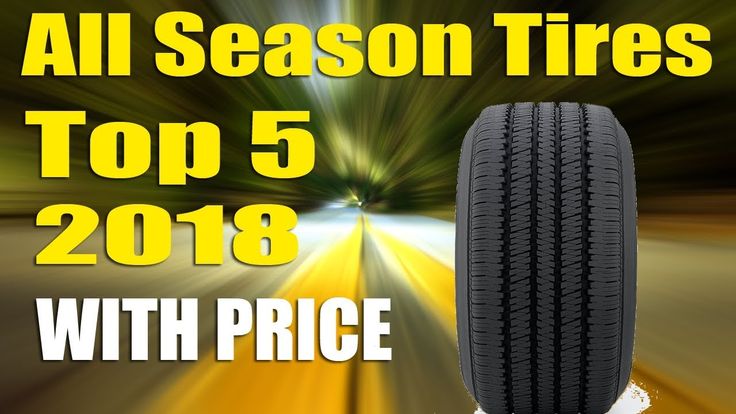 In summer, the all-season will overheat and “float”, which will lead to premature wear. nine0004
In summer, the all-season will overheat and “float”, which will lead to premature wear. nine0004
In case of extremely low temperatures, tires will lose to their winter counterparts. Such kits work most effectively at near-zero levels, providing proper grip on cold asphalt, slush or rain. In such conditions, rubber can be used, but it is not worth riding it all year round; it is worth putting profile shoes for the winter or summer season.
Each set has its pros and cons. All season tires are no exception. nine0004
Benefits:
Disadvantages:

It is mandatory to have regulated inscriptions on the side surface of the tire. The logo and the name of the rubber manufacturers, as well as the name of the brand, are printed in large letters. Some car manufacturers may recommend certain brands as the most suitable for the model. This is what Chevrolet or VAZ do.
The tire size is also marked on the sidewall of the tire. There is a European type of marking. For example, readings 205 * 35 * R17 make it clear that the width of the tire is 205 mm, the profile height is 45, and the inner diameter is 17 inches. The letter r means that we have a shoe with a radial cord weave. nine0004
The American method is similar to the European one, only there are additional letters in front of the numbers, which signal the "orientation" of the rubber (P - Passanger, LT - Light Track). There is another way in which the standard size is indicated, where the values \u200b\u200bare given in inches. For example, if there is a number 29 * 11 * R18 on the side, its decoding will mean the following:
For example, if there is a number 29 * 11 * R18 on the side, its decoding will mean the following:
Another mandatory parameter is the speed index. This is a letter designation that indicates that the car can move at a given speed for several hours. The closer the letter is to the end of the Latin alphabet, the higher this indicator. Now the most common are kits with indices S, T, U, H V or W, allowing you to reach speeds of 180-190-200-210-240 or 260 km / h, respectively.
Together with the speed category, tire manufacturers put down two more numbers - the maximum load index. This parameter means that the tire is capable of driving under the specified weight on one wheel, subject to maximum pressure. The indicator is indicated in kilopascals closer to the inner radius.
The higher the value, the greater the load that the wheel can carry.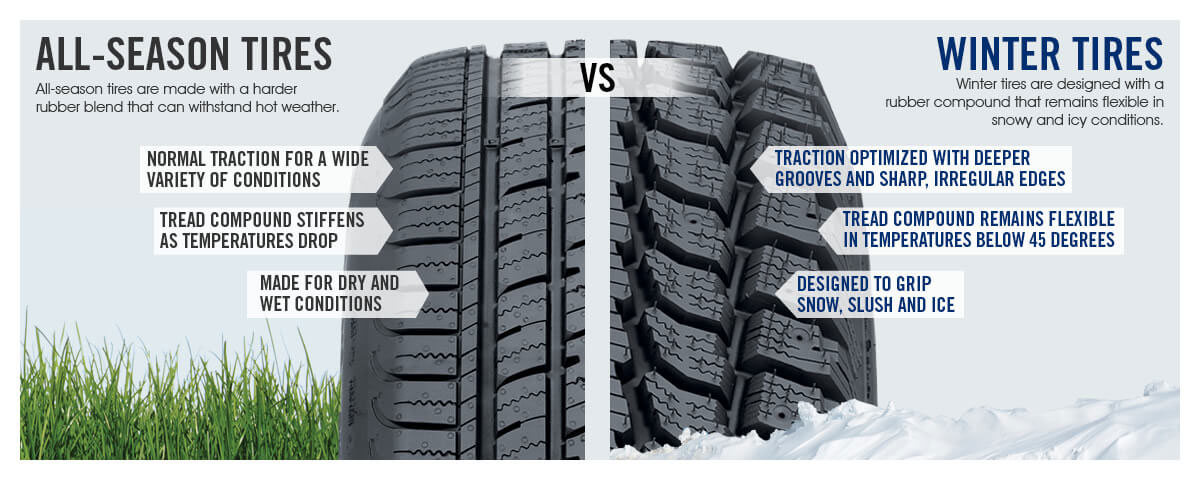 The minimum value in the industry is 1 - 46.2 kg per wheel, and the maximum figure is 279 - 13.6 tons per cylinder. nine0004
The minimum value in the industry is 1 - 46.2 kg per wheel, and the maximum figure is 279 - 13.6 tons per cylinder. nine0004
Sometimes the marking of all-season tires can be supplemented with various badges. Among the additional designations you can find the inscription "Retread". The fact is that some sets are subject to repair and the mixture is re-fused on them and the tread is cut. Remanufactured products bear this designation. Riding on such rubber does not threaten anything, however, the tire bought by the driver will wear out a little earlier. Fortunately, the price is cheaper.
Some car tires and rims do not fit together, with fundamental differences in design. So, if you are going to change the tires of a car with your own hands, it is worth remembering that chamber kits must be installed on the corresponding wheels with the designations LK, GK or RK. The symbols LB, GB or RB indicate a combination with tubeless type kits (TubeLess). nine0004
Tire installation regulations govern the presence of colored markings. If there is a yellow triangle icon on the sidewall, then this is the lightest part of the rubber. All that needs to be done is to align it with the label on the disk. The red dot indicates the hardest point and should also be aligned with the L mark on light alloy wheels.
If there is a yellow triangle icon on the sidewall, then this is the lightest part of the rubber. All that needs to be done is to align it with the label on the disk. The red dot indicates the hardest point and should also be aligned with the L mark on light alloy wheels.
Be sure to mark the tire with four digits indicating the date of manufacture of the kit. In the first two, the ordinal number of the week is encrypted, and the last - an indicator of the year in which the wheels were made. The number 2517 indicates that the rubber was produced in the 25th week of 2017. nine0004
We told you how to distinguish winter tires from summer tires - by the snowflake icon. However, for choosing shoes for a non-trivial car, this knowledge may not be enough. When purchasing wheels for a crossover, you should imagine where the car will spend most of the time. If in the city, then standard tires with the designation AW (All Weather or Aqua - improved drainage and increased resistance to aquaplaning) are a good fit.